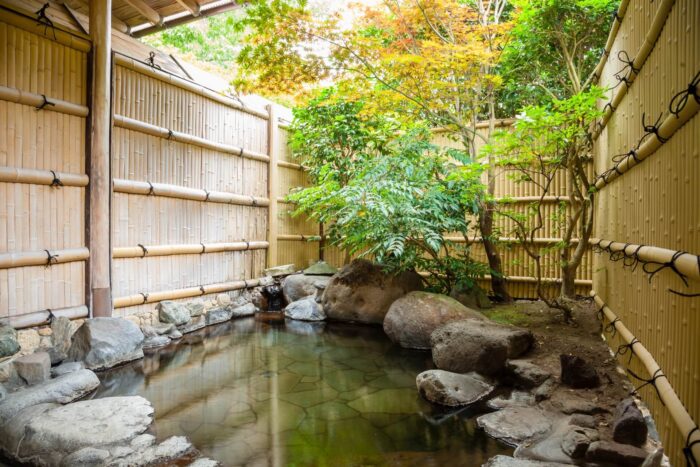
Last Updated: 15 Jul 2020 Are Americans bad at organizing data?
Japanese executives often complain that their American colleagues are “bad at organizing data.” But communication skills are something that many American businesspeople pride themselves on. What’s the disconnect? What should Americans do to make sure that their written communication is persuasive for Japanese?
Americans working at Japanese firms often complain that their Japanese colleagues take too long to make decisions. The various organizational and cultural reasons behind this phenomena are extremely complicated, but there is one key factor that is often overlooked: the way that Americans present information to their Japanese colleagues can contribute to the holdup in the decision-making process. According to one Japanese manager who is a key decision-maker in his company’s operations in Japan, “The information we get from our American colleagues isn’t enough to make us comfortable going forward. Even though they send us reports, the information isn’t convincing enough for us. This causes us to delay further.”
What is it that Japanese are looking for in written communications, and how is it different from how Americans are used to communicating? This article will explore techniques that American employees of Japanese firms can use to create written communication that is effective in persuading Japanese colleagues. Some of Japanese’ written communication preferences are due to their challenges in using English as a second language, and some of them are due to cultural differences in how information is analyzed and presented.
Use more structure, fewer words
Many Japanese feel overwhelmed by the sheer volume of words in the written communication they receive from American colleagues. “Americans have an advantage over us because they are native speakers of English. They can type up e-mail after e-mail just like that, and it’s impossible for us to read and digest them all. We simply can’t keep up, and as a result it can take a long time before we answer all the e-mails we receive.” laments one Japanese businessman. Another complains “The Americans I work with tend to put together big thick reports. It takes them a lot of time and effort, but it’s really hard for me to wade through something like that. What I really need is a two-page overview.”
It’s not that Japanese are unwilling or unable to read English, it’s that it just takes so darn long! For example, looking at my situation as an American fluent in Japanese as the reverse case, I am able to read Japanese newspapers and books without any problem comprehending them. However, it takes me 2 to 3 times as long to read the same amount of information when I am reading it in Japanese as compared to English. I am also unable to skim or scan something written in Japanese — reading something thoroughly is my only option. No matter how proficient one becomes in a second language, it will always take longer and require more concentration to read in one’s second language.
Thus, when preparing written information to Japanese, it is important to take into account how difficult it is for them to process large volumes of material written in English. The following tips can help make it easier for Japanese to sort through your writing for the key information they are looking for.
• “Less is more” When it comes to writing style, most Japanese would agree with this famous quote by architect Mies van der Rohe. Make sure to boil down what you want to say to the essentials. Be your own editor: read over what you have written to be sure that you are as succinct as possible.
• Simple and clear. Don’t forget the essentials of communicating with non-native speakers of English: Keep your sentence structure simple, avoiding complicated grammar. Avoid slang and idioms. Include a definition for technical terms, jargon, or other words that may not be familiar to your readers. Try to be consistent in the words you use to describe things (e.g. don’t use ‘speech” and “presentation” interchangeably in your document, pick one and stick with it throughout).
• Headings and bullet points. Use of section headings, bullet points, numbered lists, and even outline form to organize your writing. This will make it easier for Japanese to visually see the structure of what you are trying to say, rather than slogging their way through a bunch of long paragraphs. For example, rather than writing a paragraph that includes various questions and requests, put what you want to know in the format of a numbered list. Your reply will likely come back in a list with the same numbering.
• Underlining. Underlining key points or facts is another way to help a non-native speaker pick out the key ideas in your communication.
• Priority codes. If you are communicating with colleagues in Japan about several matters simultaneously, it is helpful to attach a priority indication at the top of your letter, or next to each matter if several are being addressed in one letter. By indicating which matters are “urgent”, “high priority,” “medium priority,” or “low priority,” you can help your colleagues direct their attention to the most important matters.
• Executive summary. In a longer report, create a short (two pages at most) executive summary which presents your key points and conclusions. (For a shorter report, a one-paragraph summary is good.) More detailed information can be included as attachments or appendices. Be sure to include references in the executive summary to where detailed backup information can be found in the body of the report.
Describe the environment and trends
Japanese are inveterate information gatherers. They want to have a holistic understanding of the entire environmental context before deciding on a direction to move forward. Thus, a key to effectively persuading Japanese is to give them a lot of background information so that they can understand the overall context. This includes describing trends and history. For example, as one Japanese puts it, “When American colleagues describe to us something that is happening,and how they want us to respond to it, we want to know if what is happening is a long term trend, or just a temporary anomaly or fad. We want to see it put in a historical perspective.”
In describing the environment to Japanese colleagues, you may need to include things that would seem to be common knowledge among people in your industry in the U.S. Don’t worry that this may seem insulting to Japanese — it’s a common practice for Japanese to start a communication by summarizing information that everyone agrees upon. Also, what may seem obvious to you may not be so to your Japanese colleagues. Don’t forget that your Japanese colleagues generally aren’t reading the same newspapers, magazines, and trade journals as you are — again, due to the reading time issue mentioned above. In the eyes of Japanese executives, one of the main things they expect from American employees is their synthesizing and interpreting for them what is happening in the U.S. environment — being their eyes and ears, so to speak.
In helping Japanese understand the environment here, one helpful technique is to share with them key articles that have appeared in newspapers, magazines, or trade journals. This can be as supporting attachments to a letter or report, or on its own (e.g. “Thought you might be interested in seeing the enclosed article from the September 21 PC Journal. It refers to the same phenomenon that I mentioned to you in my report last month.”) I think that such articles are great, because they are authoritative and there is no need to reinvent the wheel when a journalist has already summed up the situation well. Furthermore, as a native speaker of English you are far more easily able to scan various publications, and thus can bring to the attention of your colleagues things which they may not have found on their own. It may feel grade-schoolish to be cutting out clippings from newspapers and magazines, but it doesn’t seem that way to Japanese, who are habitual article clippers. Remember to underline the key parts of the article that you want to draw the reader’s attention to — helpful for a non-native speaker who has difficulty quickly scanning an article written in English.
Provide authoritative backup
When writing persuasive communications to Japanese, think of yourself as a journalist. Rather than saying “sales of widgets are going up,” quote a specific statistic. Rather than saying “customers have been asking for more colors of widgets,” give specific quotes from customers. Such concrete backup will go a long way toward convincing Japanese.
Communicating supporting data in a visual format (graphs, tables, charts, etc.) is also extremely helpful. Perhaps it is due to the highly visual nature of the Japanese language itself, or the Japanese educational system’s emphasis on creating charts, but Japanese tend to be extremely visually oriented in processing information, (As a side note, for this reason Japanese far prefer receiving directions to an unfamiliar place in the form of a map rather than a paragraph of “left on Churchill, right on Howard” etc.)
Anticipate questions
Americans working with Japanese often complain about endless rounds of questions. One way to avoid this is to anticipate what questions might be asked. Try to think of what the person you are dealing with might want to know, or what they are likely to be asked by their superiors (a frequent reason for Japanese asking questions is to prepare themselves for being grilled by the boss). Include as much of this information as possible in the form of attachments to your communication.
Stress consistent themes
Anyone who reads a lot of documents produced in Japan (newspaper articles, annual reports, company documents) will notice that key themes and catchphrases seem to crop up again and again. An important part of reading and writing effectively in Japan is to know what the current key terms are, so much so that there are popular phone-book sized publications (e.g. Imidas) that come out every year to help people keep up with them. For example, a few years ago “internationalization” and “borderless” were popular; now the current favorite is “global standard.”
From an American perspective, this constant reference to the same touchstones can seem unoriginal and repetitive. However, what Japanese are trying to accomplish by doing this is to achieve a sense of consensus about what is happening in the environment. By using a catchphrase which sums up a generally-agreed upon view, the person writing is using a kind of shorthand.
I recommend that Americans dealing with Japanese create their own touchstones that can be used in communications. For example, you might decide that “variety,” “customer responsiveness,” and “connectivity” are the key themes that you want to emphasize about trends in the U.S. market and how your firm needs to respond to them. You could write a report for your Japanese colleagues that describes in detail these trends and how you define them. Then, in future communications you could refer to these themes as a kind of shorthand. You could also use these themes as a way to organize future communications (e.g. as topic headings).
While you can do this on your own, it also could be extremely effective to reach a consensus among American staff about a set of themes and encourage all American staff to use those themes in their communications with Japanese colleagues. This can help impart a sense of consistency among communications from Americans to Japanese, which will help to more effectively convince Japanese. Americans tend to be very individual in their approaches to discussing and describing issues, and sometimes Japanese have difficulty synthesizing the input that they get from multiple American colleagues. Using a consistent set of themes can address that.
Describe other alternatives considered
Typical American communication style is to evaluate a series of alternatives, pick the best, and then present just that one. This is part of the “just give me the bottom line” aspect of U.S. culture, which just wants to know conclusions and does not have the patience for long explanations. However, Japanese have a different communication preference. They like to know all the options that were considered, and why other options were eliminated. This helps them feel more comfortable with the option that was
Create forms for routine communications
For routine types of inquiries or communications, it could be worth the trouble to create a standard form or format that would be used every time. For example, one of my clients was frequently sending samples to the lab at their head office in Japan for analysis. When each of the samples was sent, a number of details needed to be communicated about it so that the lab could conduct the proper tests. There had been a number of delays and difficulties due to the difficulty the lab staff had sorting through the information. They developed a form that had a set space for each of the key facts that needed to be communicated about a sample. For items where there were only a few possible options on what would be written, a checklist was created. The form was done bilingually, which also made it easier for the lab members to use. Creating standard forms of this type can help to make communication much smoother.
In any organization, written communication is a key element. It is even more so in multinational organizations, where the time difference can make phone conversation difficult, and where non-native speakers of English have special challenges. Adopting the above strategies in your written communication with Japanese can decrease frustrations and help you meet your objectives.
Related articles
22. Dare to be Barefoot【Column: Leap Before You Look】
One thing I never 屈服する (gave in to) while living here in the US for many years is to wear shoes insi
The culture component and why it matters in management
Let me start with what might at first appear to be a personal story unrelated to cross-cultural mana
21. Shower, Bath & Beyond【Column: Leap Before You Look】
The 26th of every month is designated as a “風呂の日 (furo day, or bath day)” in Japan. This comes




